iOS 16 Fitness — this new iPhone app is a game changer for me
The Fitness app is coming to all iPhones and you don't need an Apple Watch
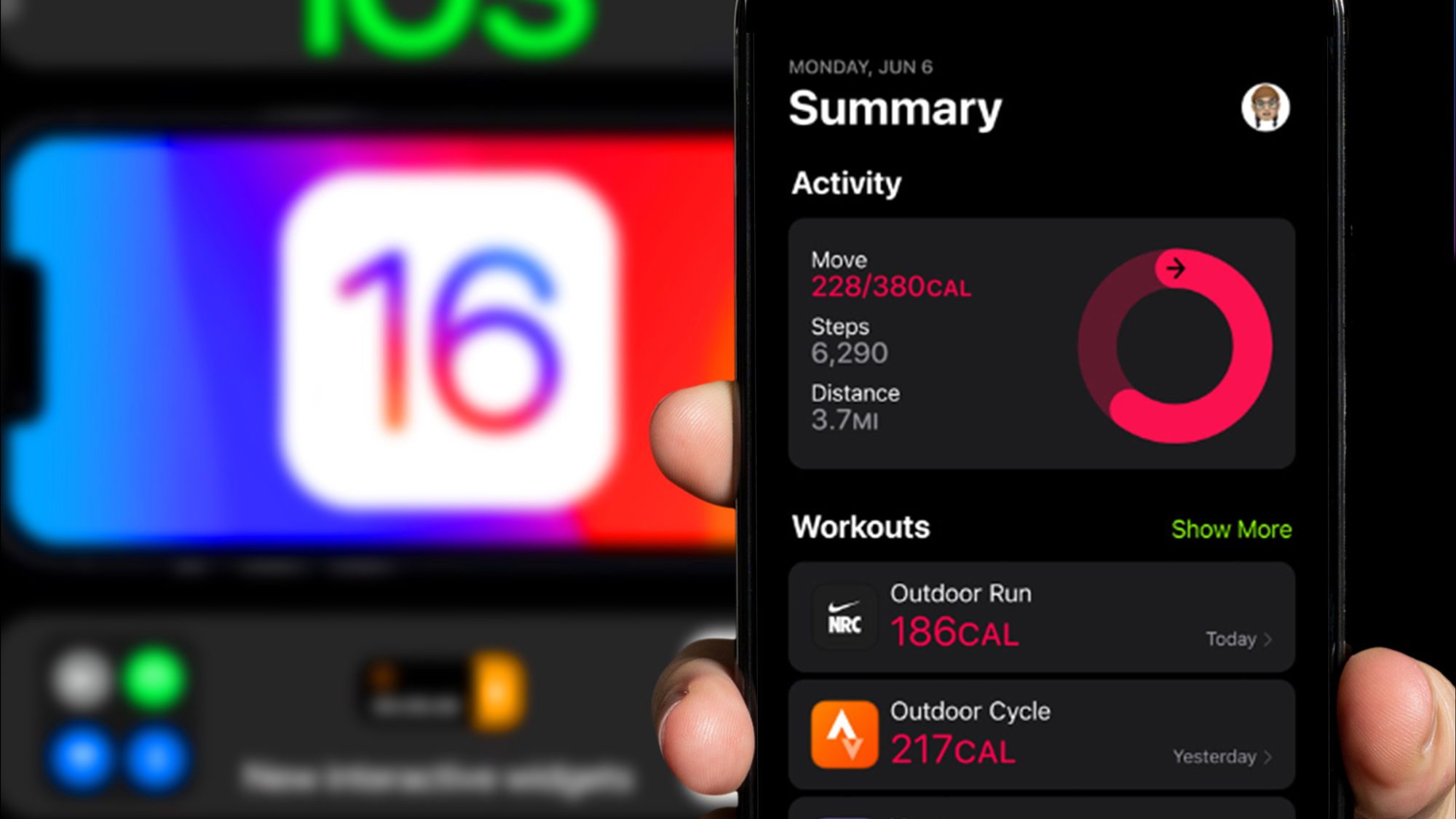
Along with all the other enhancements that iOS 16 brings to iPhones, there's a new addition to the built-in apps coming with Apple's next major update to its phone software. And it just may motivate you to enjoy a more active lifestyle.
Fitness is iOS 16's big newcomer, adding a built-in tool to your iPhone for tracking how much you move during a given day. An activity ring in the Fitness app charts your progress toward meeting your movement goals and lets you earn achievements when you do. You can even share your activity with friends and family, using their progress toward meeting activity goals to motivate you.
This will sound very familiar to anyone who owns a wearable on our best Apple Watch list, who already enjoy this app on their smartwatches and can download a companion version of Fitness to their iPhones for a bigger-screen view of their activity and workouts. So in that sense, Fitness isn't quite as new as you might believe.
The difference is that as of iOS 16, you don't need an Apple Watch to use Fitness any more. Now it's available for any iPhone running Apple's software update. And if you've downloaded the iOS 16 public beta, you can try out Fitness right now, no watch required.
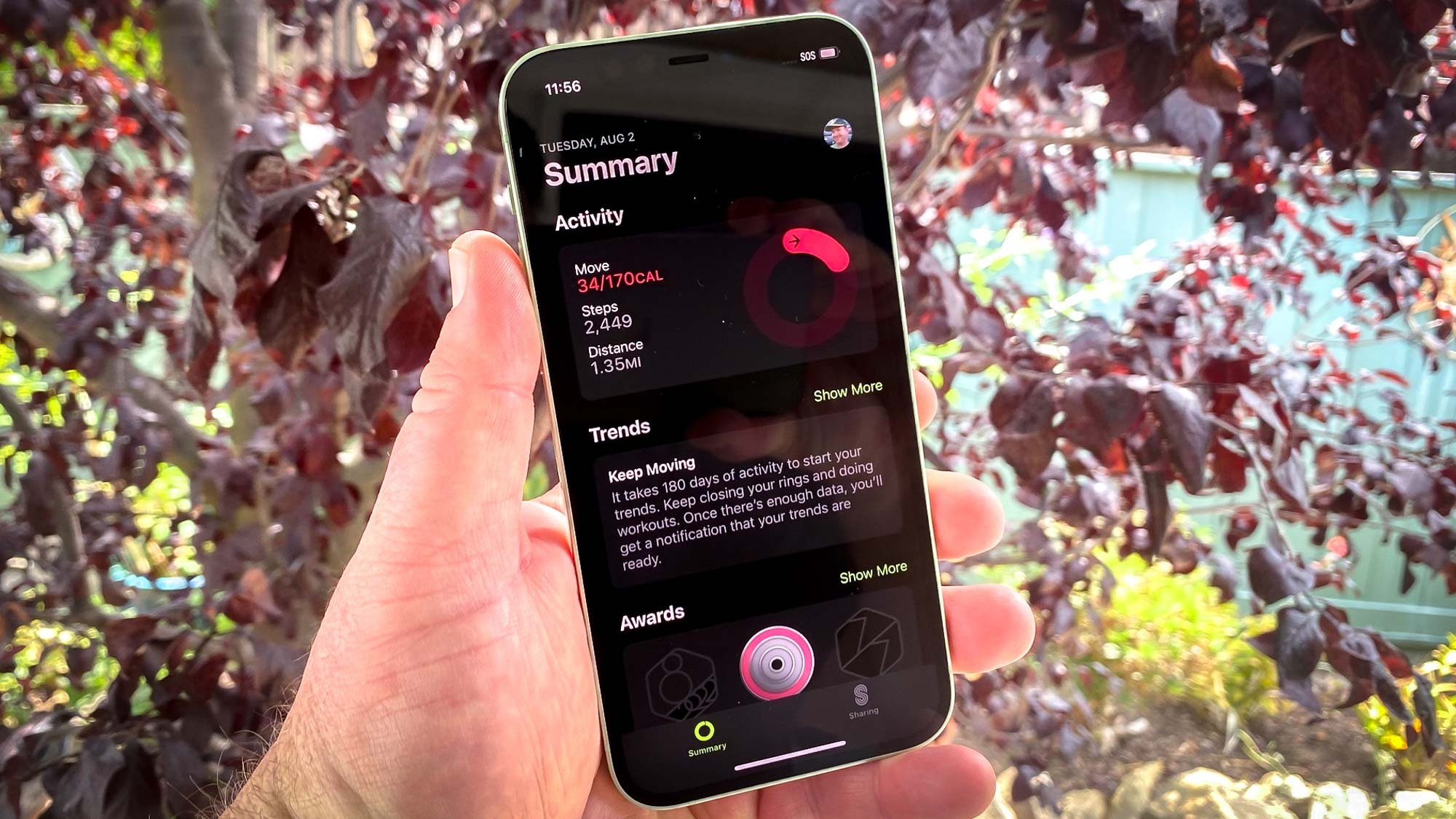
iOS 16 Fitness: A healthier me
The addition of the Fitness app to every iOS 16-capable iPhone fits within Apple's recent interest in helping people that use its products pursue more active, healthier lives, using the data collected on your personal devices to motivate you and help you formulate fitness goals.
My hope is that the ongoing drive to close the Fitness app's rings and being told by my iPhone that I'm a good boy will inspire me to go on daily walks and pursue other healthy activities.
Fitness also happens a welcome iOS addition for me, personally, since I've found pandemic era-living to be detrimental to my get-and-up go. Two-plus years of limited movement is not helping me plow through middle age as the picture of health.
So it's my hope that the ongoing drive to close the Fitness app's rings and being told by iPhone that I'm a good boy will inspire me to go on daily walks and pursue other healthy activities, just like iOS 16 Health's medication tracking tool has helped get better at logging my daily intake of pills.
Sign up to get the BEST of Tom's Guide direct to your inbox.
Get instant access to breaking news, the hottest reviews, great deals and helpful tips.
Based on my testing for my iOS 16 public beta hands-on, here's a closer look at how the iOS 16 version of Fitness will work if you don't have an Apple Watch and what features the app has to offer.
Setting up iOS 16 Fitness
It's easy to get started with Fitness. Just launch the app, hit Continue on the ensuing splash screens and follow the prompts to provide the Fitness app with any necessary data. The most important thing you'll need to set is your move goal — which is how many calories you aim to burn each day.
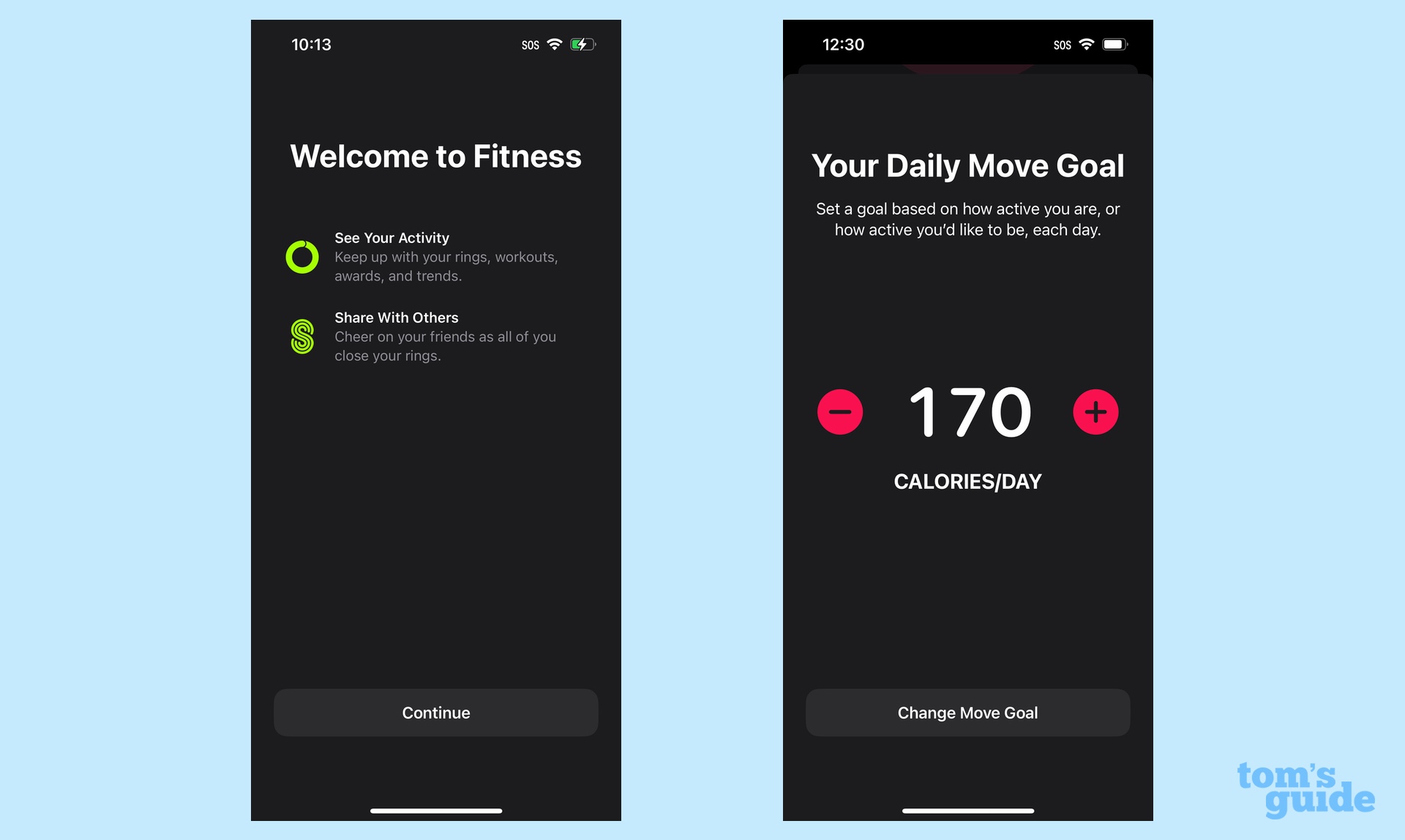
Don't be concerned about setting too high or too low a goal. The app itself will give you some ranges, but changing your move goal is as simple as going into the activity section of the app, and adjusting your calories/day up or down by tapping on the plus and minus buttons.
Note that for users 13 years and younger, the Fitness app uses the minutes spent actively moving rather than calories expended, which is probably a healthier approach for growing bodies.
What the iOS 16 Fitness app tracks
If you're using Fitness without an Apple Watch, the iOS 16 app looks quite a bit different from the multicolor rings you might have seen on someone's watch. That's because the Activity ring on the iPhone version just monitors how many calories you've burned versus your overall goal.
The two other rings from the Apple Watch version — Exercise and Stand — aren't present here, presumably because your iPhone doesn't have the sensors to accurately track those metrics.
But there are sensors on the iPhone that can calculate the number of steps you take, which is exactly what Fitness uses to see how close you are to reaching your Move goal. In the Summary tab of the Fitness app, the activity section lists your steps, the distance you've traveled and the calories burnt on a given day, with that latter metric filling up your move ring.
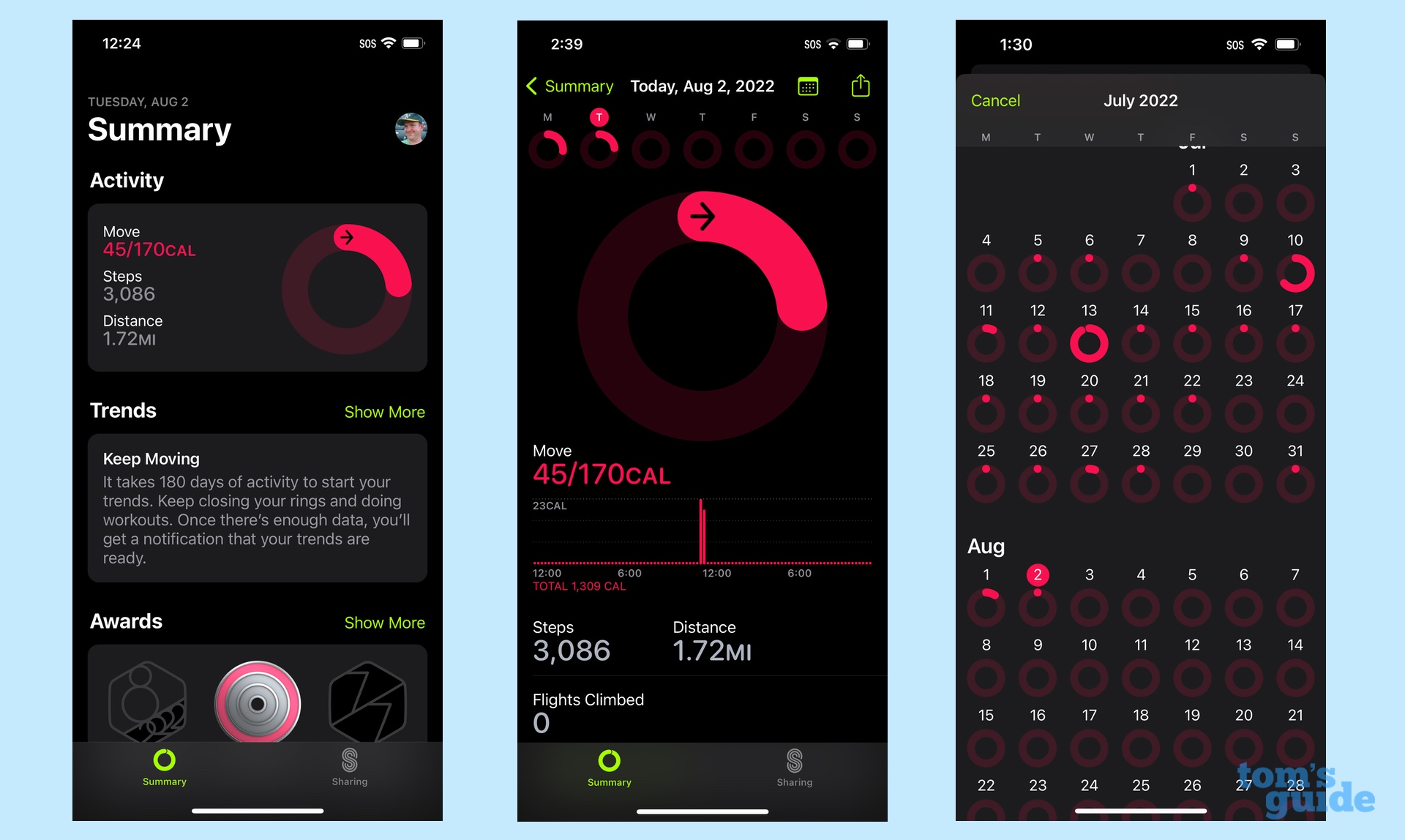
For a deeper dive into activity, tap on that area of the screen, and you'll see a breakdown of movement by the hour. At the top of the screen, there's a weekly view at how close you came to filling your move ring, and a calendar icon you can tap for a more historical view of your performance.
It's on this screen where you'll also see that the Fitness app tracks the flights of stairs you climb. I'm not sure how well this feature works, as I go up and down 10 steps worth of stairs several times a day to go outside my house or enter my laundry room and home office, and Fitness has calculated that I've climbed exactly one flight of stairs in the last two months. I question the value of that stat.
Below the Activity section of the Summary screen, you'll get to see how you're trending in four categories — your move goal (in terms of calories per day), the distance you travel each day, your walking pace and your running pace.
You'll need to enable the Fitness app to calculate those trends. Since this feature is comparing your last 90 days of activity to the last 365, Trends won't kick in until the app has measured 180 days of activity. You'll get a notification on your phone when the feature goes live.
iOS 16 Fitness and other workout apps
The Fitness app would be of limited value if it just limited activity tracking to counting how many steps you walk each day. You can also tie workout apps into Fitness, with the activity tracked by those apps helping you close the move ring.
Additionally, the data collected by Fitness can sync up with the built-in iOS 16 Health app. It's stored in the Activity category on the Health app, where it can be used to get a fuller picture of your health.

The Fitness apps interacts with the rest of iOS 16 in one other way — Apple has built widgets that showcase your current activity stats. You can either place a Fitness widget on the home screen or put it on the lock screen of your iPhone if you take advantage of the new iOS 16 feature that allows you to customize your lock screen with widgets.
I find the Fitness widget particularly useful for checking my progress without having to launch the app, so that I know when I have to pick up the pace on getting out and about.
The social side of iOS 16 Fitness
It may seem like an odd motivator for a grown adult to collect graphical icons. But when I see that nearly empty awards section when I fire up iOS 16 Fitness, I find myself wanting to do something about it.
Gamification has become a popular strategy for apps that aim to help you do everything from lose weight to learn a language. By dangling unlockable achievements or using friendly competition, the theory goes, an app can incentivize people to meet their goals. And iOS 16 Fitness is not immune from this approach.
The bottom third of the summary screen is adorned with the awards you can unlock for meeting your move goals or fulfilling monthly challenges. Even more inspiring, you can see the awards you have yet to earn — at least in the early stages of using Fitness.
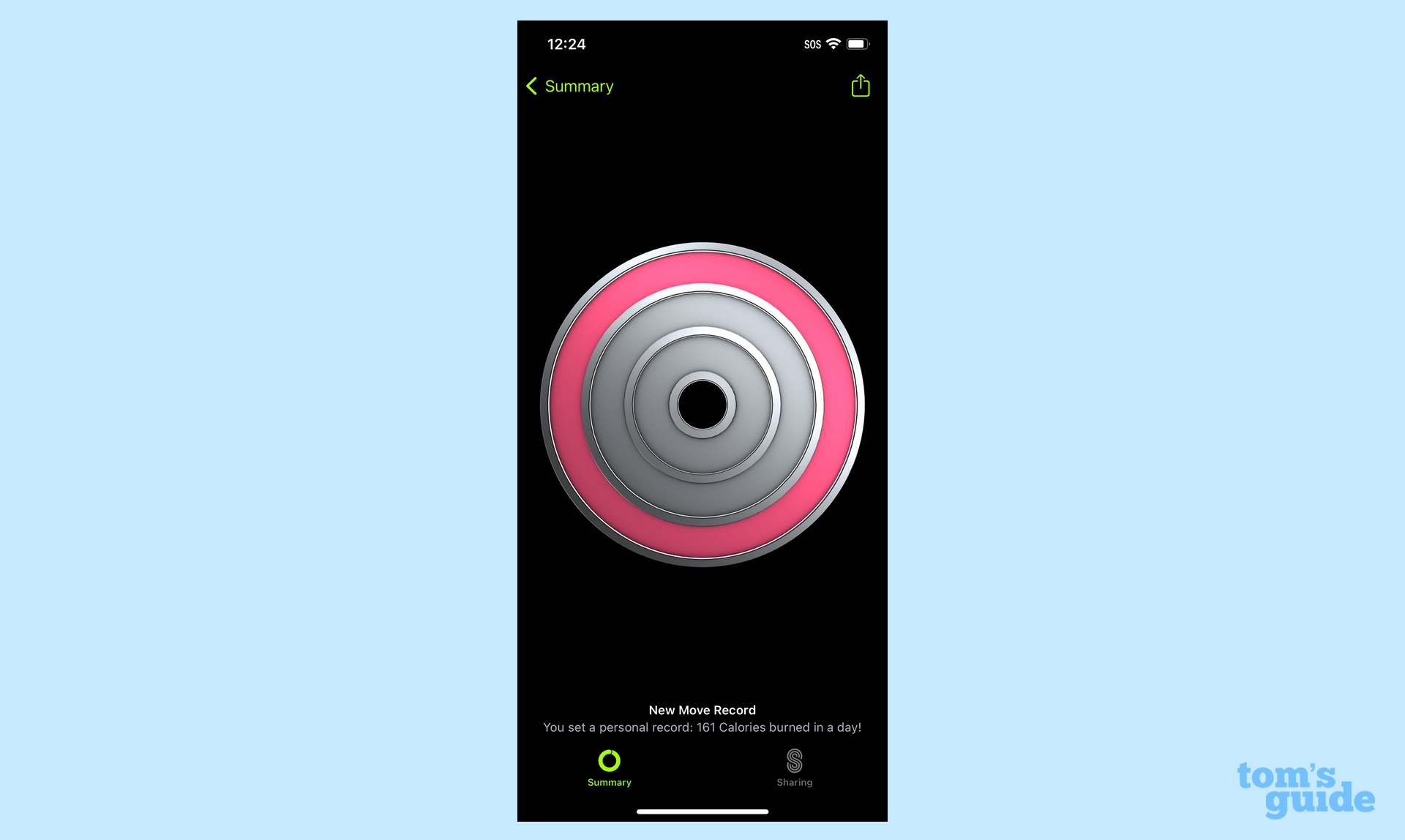
It may seem like an odd motivator, a grown adult yearning to collect graphical icons just for going on more regular walks. But I see that nearly empty awards section every time I fire up iOS 16 Fitness, and I find myself wanting to do something about it.
There's another potential motivator included with Fitness, and it lives in the sharing tab of the app. You can invite friends to share their workout info with you, and they'll be able to see yours. The idea here is that seeing everyone's progress will provide some proper incentives to avoid sitting around and seeing your friends' activity stats leave you in the dust.
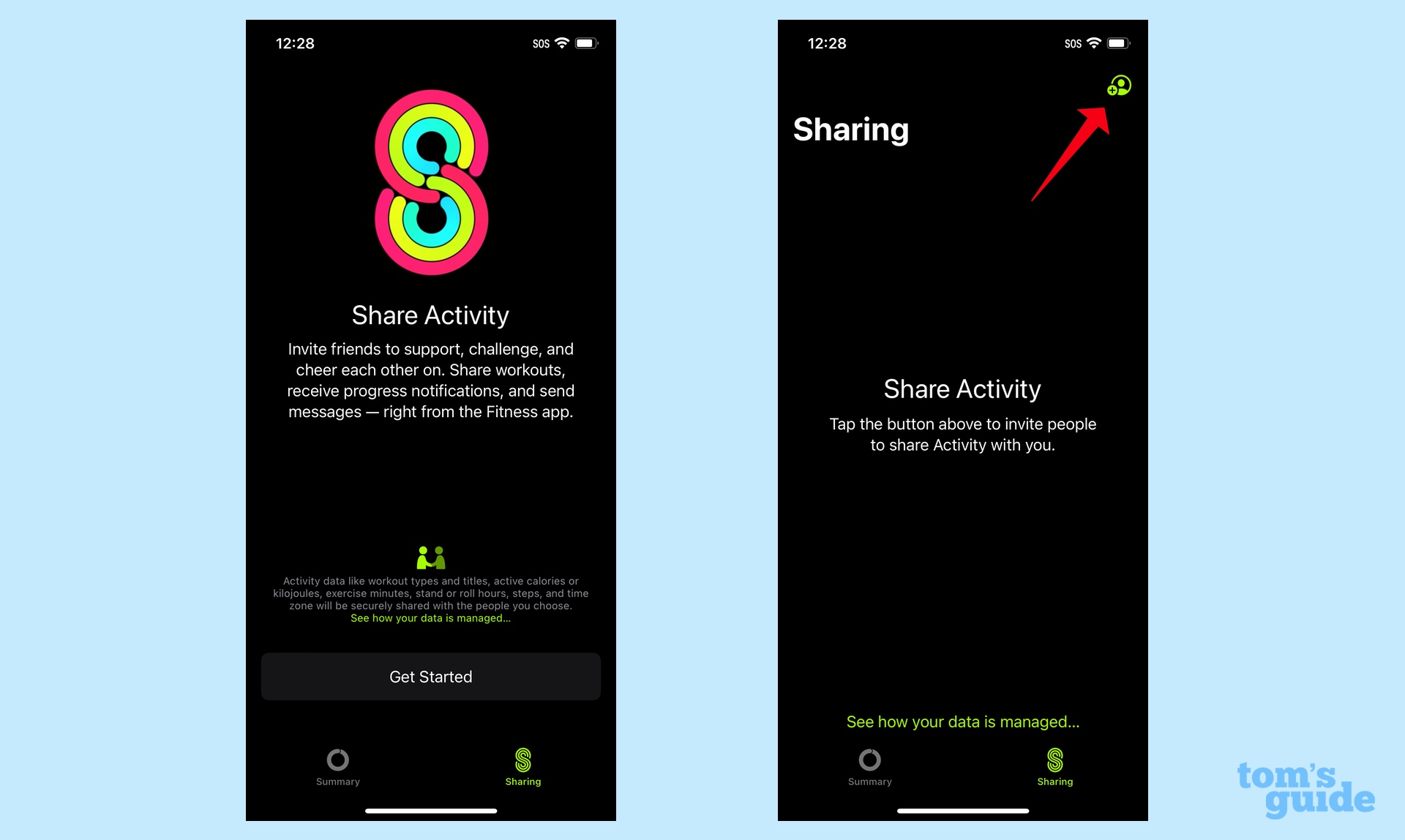
Sharing activity data is as simple as tapping Get Started on the sharing tab's splash screen and then adding people with a tap of the green button in the upper right corner of the subsequent screen. You can send invites to anyone in your contacts, or you can enter a fresh email address altogether.
iOS 16 Fitness outlook
Some people may download and happily use iOS 16 without ever checking out the Fitness app — maybe because they've already found a workout app that's doing the job for them, maybe because the value of tracking daily steps just hasn't occurred to them. If it's the former, great — the App Store is filled with options for the best workout apps for your iPhone. But if it's the latter, please consider this a recommendation from a fairly sedentary person to give iOS 16 Fitness a try.
The Fitness app is a simple entry into thinking more about being active, without incurring the expense of a new smartwatch or a monthly fee for a training program. The app's easy to use and contains a lot of motivational tools to keep you moving. It's early days for me using iOS 16 Fitness, but I'm hoping that it's the first step into more healthy living — or at least a lot less sitting around.
Philip Michaels is a Managing Editor at Tom's Guide. He's been covering personal technology since 1999 and was in the building when Steve Jobs showed off the iPhone for the first time. He's been evaluating smartphones since that first iPhone debuted in 2007, and he's been following phone carriers and smartphone plans since 2015. He has strong opinions about Apple, the Oakland Athletics, old movies and proper butchery techniques. Follow him at @PhilipMichaels.

